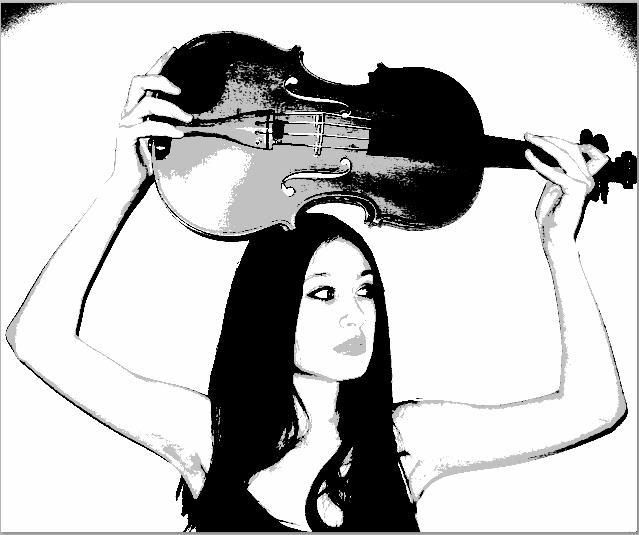
Hesse's Narcissus and Goldmund explores the journey into manhood of the puerile, artistic Goldmund and how it not only affects, but enlightens his dear friend Narcissus. Between Narcissus and Goldmund Hesse explores the differences between the logical and the sensual, the intellectual and the artistic. The book is heavily focused on Goldmund, who is sent by his domineering and uncompassionate father to a cloister, Mariabronn, in order to receive schooling and eventually enter the monk brotherhood. Immediately the cloister's prodigy, an analytical and intense young scholar named Narcissus, recognizes the great potential this Goldmund possesses.
Two life-changing experiences occur during Goldmund's student career at Mariabronn; one experience took place the night he snuck out with some schoolmates to meet some peasant girls and he received his first kiss from a dark gypsy girl named Lise, and the other experience was an intense discussion with Narcissus that Goldmund lacked a mother figure in his life. Compelled to find his mother, who had run away when he was a young boy, Goldmund escaped from the cloister and journeyed for roughly ten years through the countryside and cities of Germany. Living as a vagrant he led a rich and varied life, encountering many interesting characters, predicaments, and lovers during his journey. He finally discovers himself and he recognizes his calling to become an artist; the whole time he keeps the images of his mother and Narcissus in mind, making his decisions ultimately based on them. When Narcissus and Goldmund unexpectedly reunite, Goldmund's transformation into not only an adult but an artist has impacted Narcissus greatly.
As a female musician I found this an interesting and necessary book to read in order to further my understanding of males and what it means for them to become artists. As simply a female I was slightly annoyed by the amount of womanizing Goldmund did throughout his journey; however he did not describe women in derogatory terms, but lauded their physical beauty and individual graces. It is difficult to relate to a person who wants to roam freely to find new experiences, since I personally find that there are many rich experiences in life when you find your vocation and your mate. I suppose that is the feminine "settler" in me, but anyway, at least Goldmund didn't mean any harm by his encounters with beautiful women. He in fact honored all of these women and their individuality, even loved some of them, but the ideal woman in his life was really his figureless, ideal mother. It's a beautiful concept in a novel, but if that happened in real life, I'd be pretty pissed off and creeped out.
Goldmund had to experience a lot of "sin", as he considered it, in order to develop into a mature and worldly human being. His loss of faith in God was replaced with a deeper faith in humanity, in the tangible, in the arts. In that way he actually brought himself closer to a higher being and purpose, something that many of his former brothers in the cloister tried in vain to accomplish but could not achieve. Narcissus had achieved this same goal, although his means varied greatly from that of Goldmund's; through prayer and piety, Narcissus achieved the same level of awareness at the world.
Molinaro's translation of this book is very smooth and captivating. The translation was completed and published in 1968, at the peak of post-modernism; while still capturing the essence of Hesse's speech it is clearly an American rendering of the text. Powerful adjectives spot themselves within compact sentences, drawing the reader in and bringing him/her along with every emotional high and low felt by the characters. I have read poor translations of other Hesse books before, which seemed like the editor simply copied and pasted Hesse's work into altavista.com's Babel Fish translating tool. While such editions as Dover are extremely inexpensive renderings of works by Hesse, it is well worth the $14 to invest in this translation.
Last published by Picador in 1957, translation copyrighted 1968 by Farrar, Straus and Giroux, New York.
Two life-changing experiences occur during Goldmund's student career at Mariabronn; one experience took place the night he snuck out with some schoolmates to meet some peasant girls and he received his first kiss from a dark gypsy girl named Lise, and the other experience was an intense discussion with Narcissus that Goldmund lacked a mother figure in his life. Compelled to find his mother, who had run away when he was a young boy, Goldmund escaped from the cloister and journeyed for roughly ten years through the countryside and cities of Germany. Living as a vagrant he led a rich and varied life, encountering many interesting characters, predicaments, and lovers during his journey. He finally discovers himself and he recognizes his calling to become an artist; the whole time he keeps the images of his mother and Narcissus in mind, making his decisions ultimately based on them. When Narcissus and Goldmund unexpectedly reunite, Goldmund's transformation into not only an adult but an artist has impacted Narcissus greatly.
As a female musician I found this an interesting and necessary book to read in order to further my understanding of males and what it means for them to become artists. As simply a female I was slightly annoyed by the amount of womanizing Goldmund did throughout his journey; however he did not describe women in derogatory terms, but lauded their physical beauty and individual graces. It is difficult to relate to a person who wants to roam freely to find new experiences, since I personally find that there are many rich experiences in life when you find your vocation and your mate. I suppose that is the feminine "settler" in me, but anyway, at least Goldmund didn't mean any harm by his encounters with beautiful women. He in fact honored all of these women and their individuality, even loved some of them, but the ideal woman in his life was really his figureless, ideal mother. It's a beautiful concept in a novel, but if that happened in real life, I'd be pretty pissed off and creeped out.
Goldmund had to experience a lot of "sin", as he considered it, in order to develop into a mature and worldly human being. His loss of faith in God was replaced with a deeper faith in humanity, in the tangible, in the arts. In that way he actually brought himself closer to a higher being and purpose, something that many of his former brothers in the cloister tried in vain to accomplish but could not achieve. Narcissus had achieved this same goal, although his means varied greatly from that of Goldmund's; through prayer and piety, Narcissus achieved the same level of awareness at the world.
Molinaro's translation of this book is very smooth and captivating. The translation was completed and published in 1968, at the peak of post-modernism; while still capturing the essence of Hesse's speech it is clearly an American rendering of the text. Powerful adjectives spot themselves within compact sentences, drawing the reader in and bringing him/her along with every emotional high and low felt by the characters. I have read poor translations of other Hesse books before, which seemed like the editor simply copied and pasted Hesse's work into altavista.com's Babel Fish translating tool. While such editions as Dover are extremely inexpensive renderings of works by Hesse, it is well worth the $14 to invest in this translation.
Last published by Picador in 1957, translation copyrighted 1968 by Farrar, Straus and Giroux, New York.


No comments:
Post a Comment